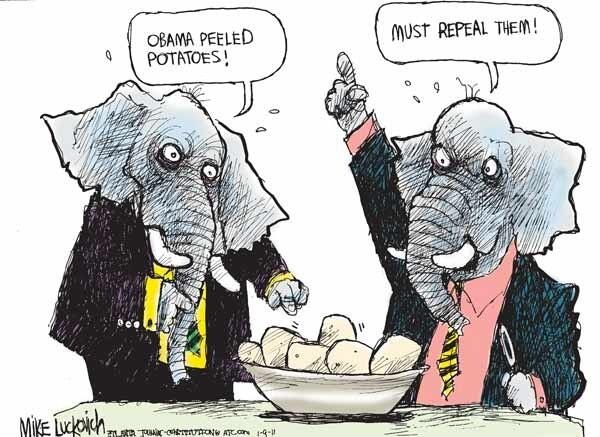From “Medicare for All” to a full private option, health-care reform is a widely debated key issue this election cycle. While politicians discuss the topic, there must be an emphasis on the characteristics of an effective health-care system—efficacy, equity, affordability, and accountability.
Efficacy measures a health-care system’s capacity to perform an intended task—a vital gauge on whether it actually improves outcomes. Equity focuses on access for a diverse range of social groups, safeguarding everyone’s right to care. Affordability certifies that the cost of medical procedures is fair and economical; it also keeps costs low for medical providers. Accountability establishes ethical standards for providers, ensuring they operate properly and efficiently. Efficacy, equity, affordability, and accountability help guarantee that all patients can cost-effectively access quality care.
Smaller programs serve as the patches that form America’s health-care quilt. The most popular health-care payment option is through employers, who share the fees with employees. Another category involves government-run programs, including the Veterans Health Administration for military personnel, Medicaid for low-income people, and Medicare for the elderly. Americans who don’t fit into these categories either pay out-of-pocket, obtain private insurance, or accrue debt.
Many Americans fall through holes in the health-care quilt, as their medical payments far exceed the maximum amount insurance companies cover. In 2019, 37 million Americans faced medical debt; nearly half of the money people raised on GoFundMe that year was used for these bills.
Even with reforms such as the 2010 Affordable Care Act (ACA)—which expanded coverage to over 20 million people—28 million remained uninsured as of 2018. Many Americans fail to meet the ACA’s criteria for subsidies and must pay full-price, pushing them into debt.
While most Americans believe that health care should be amended, what shape this reform takes depends on how people measure efficacy, equity, affordability, and accountability. An efficacious plan must critically weigh these factors, yet Joe Biden and Donald Trump’s health-care plans fail to do so.
Trump opposes the ACA’s patchwork system due to high premiums. While Trump has repeatedly promised to “repeal and replace Obamacare,” his administration has not revealed any comprehensive plans to do so. Instead, Trump has issued relatively small executive orders to dismantle the ACA. In 2017, he signed a bill that effectively repealed the most controversial aspect of the act: the individual mandate’s tax on uninsured people. A coalition of physician, hospital, and health insurance industry associations warned that this misguided repeal would increase premiums. Their premonition rang true—average premiums increased by 20 percent the following year.
Now Trump plans to cap financial assistance for those who buy insurance plans on the government-run market. While he bills his idealistic free-market solution as providing choice to consumers, it actually restricts options for those with chronic illnesses and pre-existing conditions.
Biden plans to adjust the ACA by creating a “Medicare-like” public option. This option would compete with private insurance, keeping a choice-based medical system. It would also expand the number of Americans who qualify for government assistance, which would increase overall coverage. Biden also promised to “bar health care providers from charging patients out-of-network rates” when the patient cannot choose who they see; however, he does not clarify how he will accomplish this.
Trump and Biden’s idealistic, flawed solutions do not balance efficacy, equity, affordability, and accountability. Trump’s plan increases affordability for healthy people by authorizing cheap but low-quality association plans. However, his health-care model sacrifices equity, as it reduces the ability of those with preexisting conditions or low incomes to access care. As healthy people turn to low-coverage plans, insurers will raise premiums on comprehensive ones; this disproportionately impacts those with greater medical needs.
Trump’s plan would likely cause 15 million people to lose their health-care coverage in just one year. Health benefits would skew toward those who can afford expensive, but medically unnecessary procedures that provide menial results and drain resources. Because of this wastefulness, Trump’s health-care system would also be inefficacious.
While Biden’s plan is more equitable through its insurance exchanges and public option, it fails to fully equalize health-care access. There is a strong positive correlation between income and health, meaning those with employers willing to provide expansive private plans or those wealthy enough to fund their own care receive a disproportionately high percent of health resources.
A properly functioning health-care system promotes efficacy and equity without sacrificing affordability and accountability. Trump’s health-care plan severely reduces equity, while Biden’s plan is only a baby step in the right direction. However, no plan under our patchwork system can effectively balance all four ethical considerations.
Biden and Trump additionally fail to address underlying systemic concerns about health care in America, notably its high administrative costs. Trump’s strategy of slowly dismantling government assistance in favor of individual health care is inefficacious and costly.
Forty-nine states lack uniform fee schedules—standardized costs for identical procedures—causing prices to vary widely by location and insurance type. This allows hospitals and medical facilities to select an arbitrary price for their services.
The lack of central regulation permits individual insurance agencies to strike deals with specific health-care providers. These convoluted deals lack oversight and require costly administrative officials to bill each patient. Less regulation increases confusion, raises the cost of health care, and reduces the number of people eligible for it.
Biden’s proposed public option would inflate health care’s high administrative costs. While these costs are significantly lower for government-subsidized care options, a public option would require the same advertising, recruitment, and processing costs as private insurance. It would simply shift financial inefficiencies instead of removing them.
Small and incremental changes will not address Americans’ desire for change. Trump and Biden must be bold in their reforms. A universal single-payer health-care system would be a solid step toward balancing efficacy, equity, affordability, and accountability in health care. This proposed system, commonly referred to as “Medicare for All,” provides government-sponsored services to every American. This proposal would reduce cost and equalize access, as it recognizes health care as a human right. That said, our country lacks a solidified, consistent plan; to craft one, we must examine our collective values and health-care priorities.
While Biden’s plan for a public option is a significant improvement over Trump’s lackadaisical approach of prioritizing the wealthy, neither politician advocates for meaningful reform that re-examines our values and redistributes resources. Efficacy, equity, accountability, and affordability can’t be balanced with small reforms. Change-makers must propose bold and innovative policy solutions, ones that consider how Americans want these four values balanced. Otherwise, the holes in our health-care quilt will only multiply.



